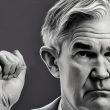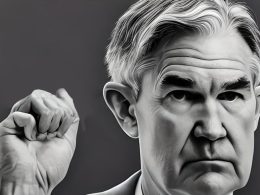by Hubert Marleau, Market Economist, Palos Management
What Happened Last Week Ending May 22:
In the first three days, the S&P 500 rose 3.8%, finding ways to make higher highs and lows. In the last two days, the S&P 500 decreased 0.5% reflecting rising pressure from the prospect of escalating U.S.-China tensions. On Friday, the S&P 500 closed at 2955, registering a 3.2% weekly increase, crossing what had appeared to be a stubborn trading range (2600 to 2900). Accordingly, I’ve raised the lower and upper limits to 2700 to 3000.
In the First Three Days:
What is particularly interesting is that, according to the BofA’s Fund Manager Survey, the professional equity managers have more cash as a percentage of their AUM than in a decade, suggesting that there is still some buying power in the system to drive the market even higher. The percentage of S&P 500 companies trading above their 50-day moving average, a sign that they are in a short-term uptrend, is now over 80% and its highest since July 2019. Not to be undone, the percentage of S&P 500 stocks over their 200-day moving averages, a sign that they are in a long term uptrend, has also been positive, sitting at around 25%. Sundial Capital Research has calculated that when such a phenomenon occurs, the S&P 500 average gains 9.7% over the following 12 months. They added: “the averaged return wasn’t great, but the risk/reward skew was healthy.”
The stock market may be an imprecise discount machine because narratives “du jour” can easily distort valuation metrics. But history shows that it does a pretty good job when one removes the kinks. Currently, two stories are making headlines which have actually turned into public debates.
One narrative has to do with how much monetary and fiscal stimulation the economy needs and whether it's too soon to ease the lockdowns. At the moment, it is hard to tell whether either scenario will end-up being right. At this point It clearly looks as if the market believes enough has been done by the Treasury and the Fed to satisfy the reopening of the economy and that the declining incidents of death are sufficient to allow an easing of restrictions. In the judgement of the market the effect of the engineered stimulative on an unlocked economy should bring about a relatively successful recovery. Perhaps foolishly, most investors believe that resistance to reopening the economy is fading fast. It seems that many of them are betting that there will not be a return to lockdowns even if a second wave were to emerge this Fall. Generally, they seem satisfied with the current declining trend in the death toll. A seven-day moving average of new deaths by one million population in the U.S. has declined from 7.89 on April 22 to 3.81 on May 21.
It is widely agreed that the fiscal and monetary authorities have averted a financial and economic panic. Theoretically, the Fed cannot run out of room to buy whatever it deems necessary. Indeed, there is no limit— the Fed could buy the entire market, if it wished to. Yet, it remains that the timeline of the pandemic is the determining variable that will dictate the shape of the economic recovery. JPMorgan’s Marco Kolanavic has devised a model that has proved to be largely accurate in forecasting the trajectory of the virus, concluding that conditions to start reopening the economy were met in mid-April. That has gathered growing public support. Politicians had no other choice than to acquiesce because standing in the way the majority opinion of the people wishing to engage in productive activity to meet their material and social needs--are likely to be voted out. Forty million workers seeking unemployment benefits is clearly unendurable. Citizens are pushing for an end to the unsustainable lockdown come what may---even if messy accommodation with the virus comes forth and/or the virus pings-pongs its way around the world. Billions of dollars are allocated to vaccine and drug treatment research. The worldwide effort is showing progress. Market expects results by the end of the year. AstraZeneca has received more than $1.0 billion in funding to secure the capacity to produce 1 billion doses of the Oxford University vaccine that’s in development. Together, they have started to recruit subjects for advanced human trials, anticipated for September.
While the coronavirus shutdown and its aftermath will be initially severe and protracted, it may not be as bad as many expect in terms of permanent change. The manner in which people will conduct their economic affairs and transactions may end up being different for a period of time, investors should be careful not to fall into the pitfalls of “affective forecasting”. I have a hard time believing that everything will turn upside down when human behaviour has barely nudged over centuries.
In a recent article in the WSJ, Jason Zweig, an intelligent investor, spoke of “affective forecasting” as the most common way people actually make forecasts. People tend to predict their own future feelings--how bad or how good one feels about events will determine their outlook. What is dangerous about this phenomenon, is that unwarned investors systematically overestimate how they feel and how long they feel bad. Yet, observations show that humans are remarkably resilient and without awareness adapt to changed circumstances with surprising ease. According to Dan Gilbert, a renowned behavioural scientist, it’s because “humans have a psychological immune system whose function of the mind helps us avoid unpleasant experiences by biasing us to believe that they will feel worse and last longer than they usually do”. Mr. Zweig wrote: “ Who among us hasn’t said, I’ll never fall in love again after being jilted by our first sweetheart---and then moved on? ”. This psychological immune system gives us the ability to recuperate from setbacks consistently taking us by surprise. It's not as if certain behaviour like social distancing and buying more stuff online will not stick, but just about everything else will eventually come back. There are signs of stability, here and there, in things like car traffic, transit usage, flights, restaurant patrons, etc. High frequency indices like the reliable ECRI Weekly Leading Economic Index are ticking up.
Although pockets of excess valuations are present, they are far away from those of the dot-com era. Contrary to the 2001 situation, companies are or have the potential to generate huge amounts of cash flows, capturing a never ending proportion of people’s disposable income. In this respect, the broad performance of the market may have been robust but without being unreasonably crazy or full-blown delusional. The U.S. is now a dot.com country. E-commerce is saving the nation from economic chaos. A wave of reported retail earnings and announcements show that the consumer sector may not be as fragile as earlier presumed. Digital operations at Walmart, Target, Lowes, Amazon, Ebay and Home Depot are booming. Meanwhile, Facebook announced that it was entering the e-commerce game because it’s just too good to pass. The Facebook Shop initiative in collaboration with Shopify will allow for free businesses to set up a single online store for customers to access both Facebook and Instagram.
Although I do not expect selling pressure in the aforementioned growth areas, the probability that there could be a change in leadership by some undervalued sectors like banking, energy, real estate and material is rising. That may happen even if there is a second wave because we are not as flat-footed as we were at the beginning of the year. We now have experience on how to deal with it. The supply of preventive equipment and testing procedures is abundant. Consumer preferences have not changed and as confidence resumes, people will return to their original working, social and consumption habits. The CEO of the BofA pointed out that credit card usage shows that conventional spending is picking up.
In the Last Two Days of the Week: Reparation, Retribution and Retaliation
There is nothing new about the fragile relationship between the U.S. and China over trade and technology issues. On Thursday, the rhetoric worsened and actions were taken by both, encouraging the possibility of a cold war. That possibility could turn into a probability because there is bipartisan support for pushing back China. Given the upcoming presidential contest, the winner may very well be the one who will bash China harder. There we go!
President Trump blames China for the coronavirus pandemic seeking reparation and retribution. The US Senate pushed against the stock exchange listing of some Chinese companies, the US Commerce Department amended an export rule designed to stop semiconductors being sent to Huawei and the Administration halted the investment of federal retirement funds in China. China politically retaliated. Beijing’s central government indicated that it would pursue a new national-security law limiting Hong Kong’s territorial autonomy. U.S. Secretary of State Mike Pompeo warned that if the special status of Hong Kong is revoked, sanctions will be imposed. This is unfortunately happening at a time when the Chinese outlook for economic growth is uncertain. China decided to scrap its hard GDP target, a worrisome sign for a world that depends on Chinese import demand.
In the view of many pundits, the tit-for-tat escalation between the world's largest economies will likely shake the financial markets. It is based on the notion that it is easier to interfere with financial flows than trade flows. For example, the Treasury and the Commerce Department can implement actions without approval from Congress.
It makes sense even though I realize that China holds $1.125 trillion of US treasury debts at a time when Washington has an enormous budget deficit. It looks bad, but there is a big need for riskless safe-haven type collateral to prevent liquidity problems. That is why the Fed activated the U.S. Dollar swap lines earlier this year. China might not buy more treasuries. Will It dump them? I don't think so. Treasuries are just too valuable at this time. Additionally, according to the BofA American investors own nearly 10% of the 100 largest Chinese companies, with $5.4 trillion in market capitalization. It’s another reason why China would not sell Treasuries indiscriminately. It would provoke a U.S. liquidation of Chinese positions, devastate the chinese stock markets and by ricochet, favour U.S investments.
Copyright © Palos Management















